Why do cucumber ovaries rot: causes of the problem, methods of solving and preventing it
When growing cucumbers, it is not enough to prepare a planting site and water the plants. This crop is often subject to disease and pest attacks. Often the ovaries, and sometimes the fruits themselves, turn yellow and rot. The emergence of infectious agents is provoked by many factors: from lack of nutrients and too much watering to adverse weather conditions.
The content of the article
Causes of ovary decay
Why do cucumber ovaries rot? There are many reasons, but the most common is fungal diseases.that appear if soil and seeds are infected. The development of infection is provoked by improper care of plants, non-compliance with the irrigation regime and air circulation.
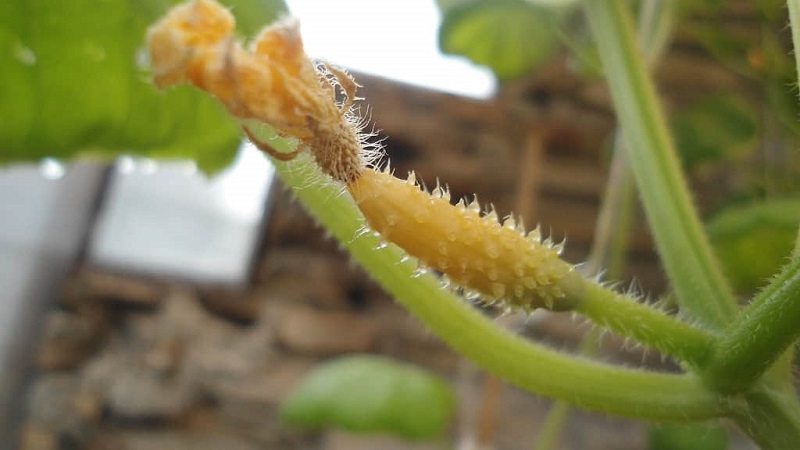
Diseases
There are several types of fungal infectionsthat affect the entire crop in a short period of time.
White rot
Sclerotinia, or white rot, completely destroys the plant... If the seedlings were initially infected, then after a while all the cucumber stalks dry out. As a result, the entire crop perishes.
At the initial stage of the disease, a white bloom appears on the stems, at later stages - dark spots.
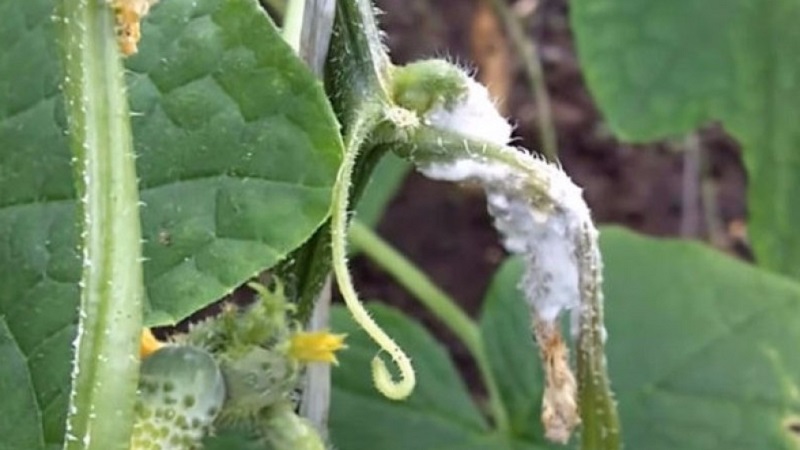
The development of infection is facilitated:
- a sharp change in temperature;
- high humidity;
- poor ventilation in the greenhouse;
- too fast growth of bushes.
Brown spot
The main symptom of cladosporia - rot at the ends of the fruit.
The mottling initially appears on the embryos, then the dark spots completely cover the cucumbers.
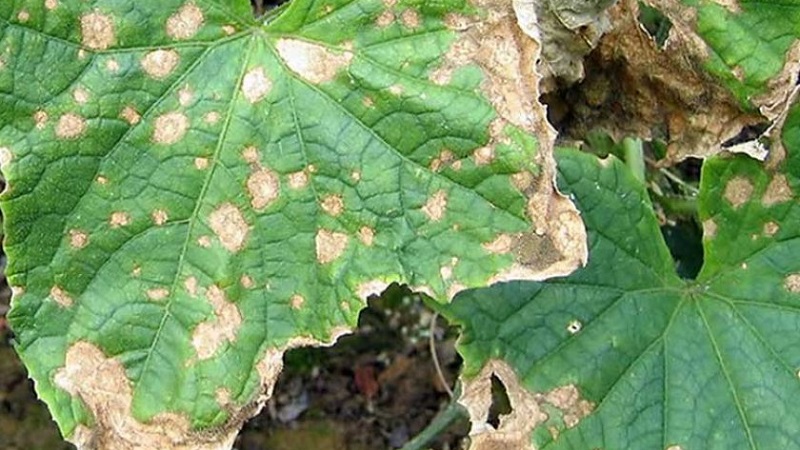
If damage is noticed at the initial stage of development, then diseased fruits are separated from the stems, protecting healthy leaves and ovaries from infection.
Important! The disease is common in southern and humid areas.
Vertex rot
The main symptom of the disease is the formation of a small gray or dark green watery spot at the top of the fruit.
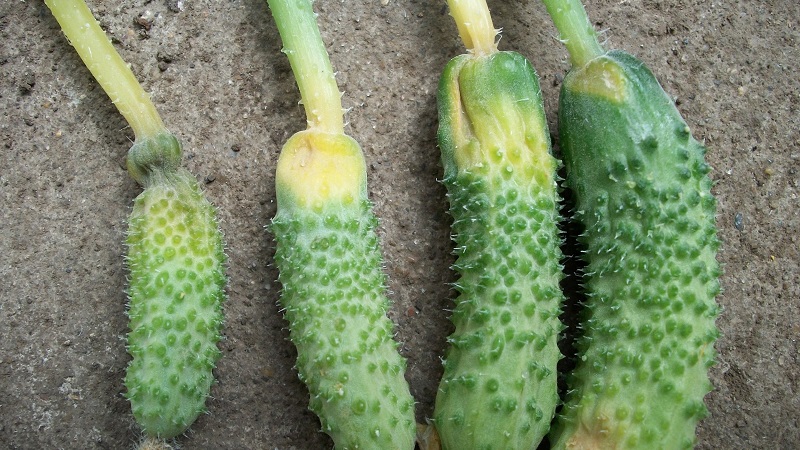
The main causes of decay:
- damage to the roots;
- unstable watering;
- lack of calcium;
- excess nitrogen.
Pests
Comfortable conditions in the greenhouse and in the garden are good not only for cucumbers, but also for insects that harm them.
Greenhouse whitefly
This insect sucks juice from cucumber leaves, leaves behind a sticky discharge, due to which the plants begin to turn black, and then completely dry out.
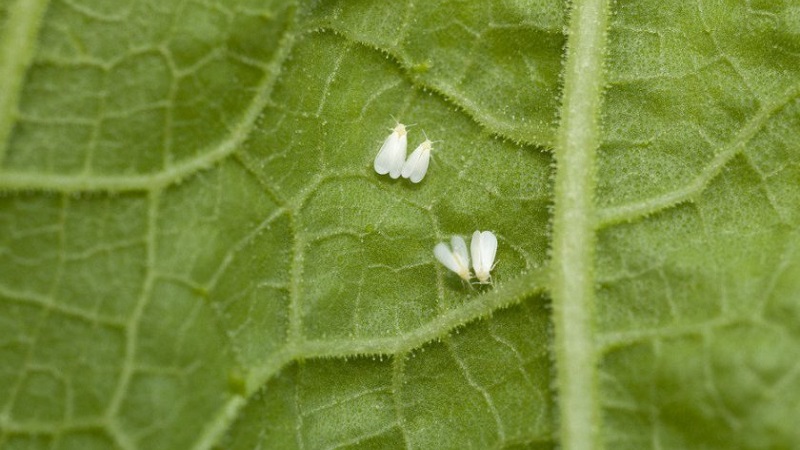
Against whitefly lay out glue traps, wash cucumber leaves... In greenhouses, nets on windows and entrance doors save insects from insects.
Melon aphid
Cotton, or melon, aphid appears in the second half of summer... Damages flowers, ovaries and shoots, causing them to shrivel and curl.
The reason for the reproduction of the pest - weeds, so cucumber plantings are regularly weeded.
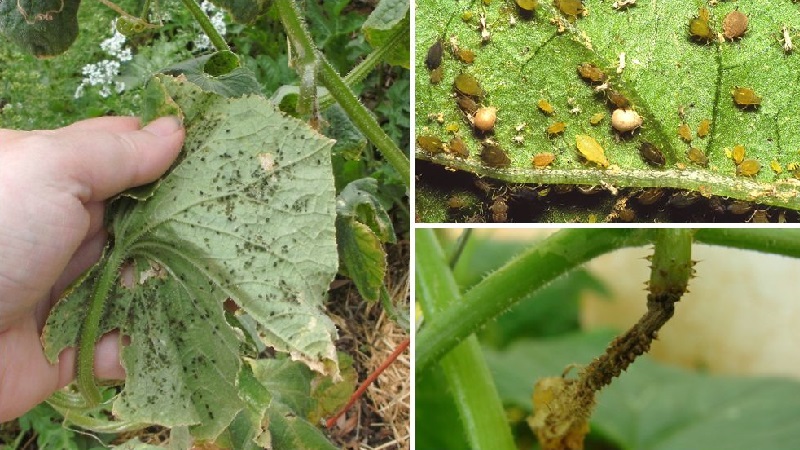
Against the pest use such a solution: 200 g of tobacco dust and 30 g of fresh capsicum are added to 10 liters of hot water, left for a day. Then stir, filter, add 1 tbsp. l. liquid soap and 3 tbsp. l. wood ash. The agent is sprayed on the entire area infected with aphids.
Agrotechnical errors
Major agrotechnical mistakesthat gardeners allow:
- The plants are too close. If the cucumbers do not have enough food space, they will not be able to feed all the ovaries. On average, 5 bushes need a plot of 2 m².
- Excess fertilizer.Most farmers constantly feed the plants with manure so that they grow better, but over-feeding with the same composition causes crop rot. So, at the stage of fruit formation, it is useful to add 1 tbsp. ash and 1 tbsp. l. superphosphate.
- Late harvest. Overripe vegetables retard the growth of other, younger fruits.
Why do different parts of the bushes rot
The main cause of rot is fungal and bacterial diseases that affect the entire plant as a whole, from the roots to the fruits. Bushes suffer from non-compliance watering regime and maintaining the wrong indoor climate.
Too high humidity and insufficient sunlight are additional factors for cucumber decay.
Young seedlings are often affected by a black leg (photo below). Signs of the disease: softening of the root collar, emaciation of the stem, wilting of leaves, rotting of the roots. Reasons: high humidity, insufficient lighting, dense planting, heavy soil.
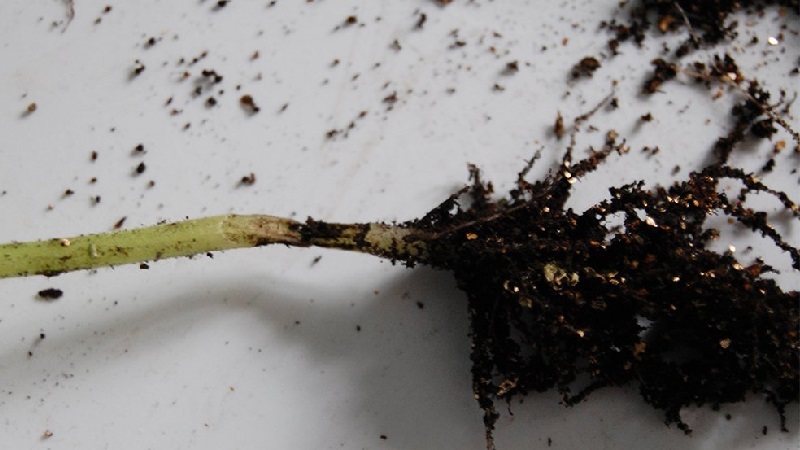
When fusarium wilting leaves and whips of cucumbers droop, roots rot... To prevent disease, the soil is disinfected before planting, and waterlogging is not allowed.
The reasons
Depending on the growing conditions of the crop, the causes of rot on cucumbers differ.
In the greenhouse
The main factors provoking the appearance of rot on cucumbers in the greenhouse:
- unsuitable indoor climate;
- insufficient illumination;
- drafts;
- excessive moisture;
- lack of fertilizers.
In the open field
Plants prefer an open, sunny area, sheltered from cold winds, and light soil.
Causes of cucumber rot in the garden:
- improperly prepared soil in autumn and spring;
- not high enough bed;
- loosening of the earth after the growth of plants;
- lack of organic matter;
- high soil moisture.
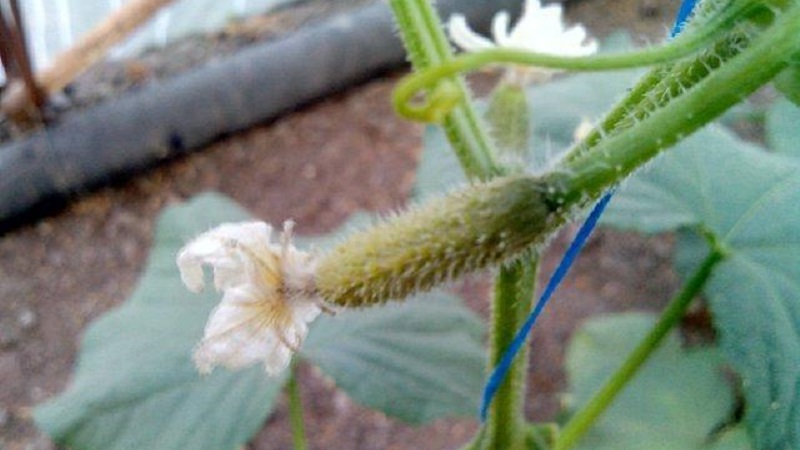
On the windowsill
Cucumbers on the windowsill are the dream of many. If all the rules of care have been met, then the first harvest is removed within 1–1.5 months after germination. The cessation of the development of culture and the appearance of rot on the ovaries indicate errors in care.
The main factors of defeat:
- unsuitable seeds;
- improperly prepared soil: a substrate of vermicompost and coconut fiber is ideal for cucumbers on the windowsill;
- insufficient or excessive watering;
- lack of light.
What to do
If signs of putrefactive processes appear on the cucumbers, irrigation is minimized as much as possible and complex treatment is carried out.
Processing facilities
Special preparations for combating rot:
- "Topaz" - dissolve 1 ampoule in 10 liters of warm water, spray the bushes;
- "Oxyhom" - 20 g of the product is added to 10 liters of warm water, the planting is processed in dry, calm weather.
After harvesting, the soil is watered with a solution of copper sulfate, all plant residues are burned. For the land and bushes use "HOM".
Agrotechnical techniques
When rot appears on the ovaries, the plants refuse to fertilize with organic fertilizers. Use only minerals in small doses.
Important! Water the cucumbers in the second half of the day, when the water and soil are warmed up.
If the air temperature has droppedplanting does not moisturize.
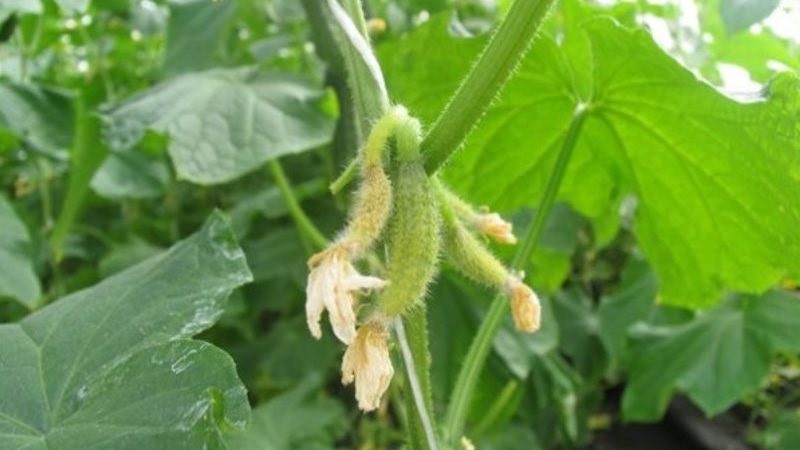
Preventive measures
One of the most effective preventive measures is the introduction of peat into the soil before planting seeds.
Helpful hints:
- Water the plants only when necessary. Water temperature - within + 20 ... + 23 ° C.
- They constantly monitor the bushes: if rot is noticed in time, it will be possible to avoid loss of yield.
- 2 weeks before sowing, the soil is disinfected with Trichodermin.
- Each time after removing infected bushes, the greenhouse or greenhouse is disinfected. All windows and doors are washed with soapy water, and the soil is treated with bleach.
- Dill, corn, lettuce, spinach are planted next to the cucumbers. They stimulate fruit growth.
Tips from experienced gardeners
Decay on cucumbers is a common problem. The most effective method of dealing with it is the timely removal of the affected bushes from the root.... Gardeners are advised to constantly monitor the condition of the plants and take action at the first signs of damage to the ovaries and fruits.
Proper care of crops, constant temperature and humidity control will prevent rotting.
The optimum air temperature in the greenhouse for cucumbers: in sunny weather - + 25 ... + 29 ° C, in cloudy - + 20 ... + 22 ° C, critical - + 13 ° C. With a cold snap and high humidity, plants get sick and die.
Conclusion
Decay of cucumber ovaries is a frequent occurrence faced by gardeners. If the problem is not dealt with, the entire crop will be spoiled. The main cause of decay is fungal infections, from which professional and home preparations are used, agrotechnical techniques are performed.
Factors contributing to the development of diseases: non-compliance with the watering regime, temperature drops, poor air circulation, pest attacks